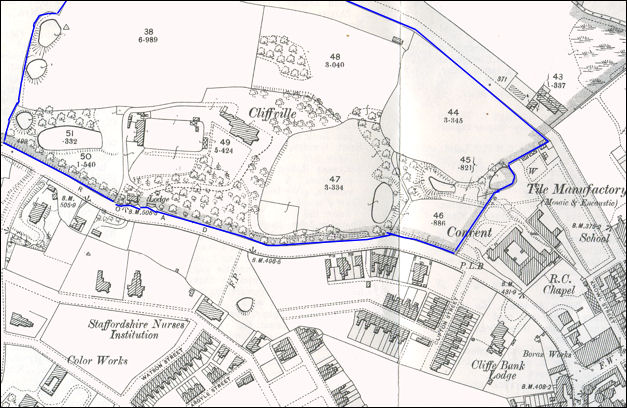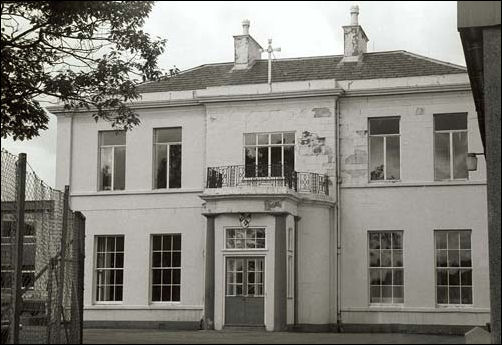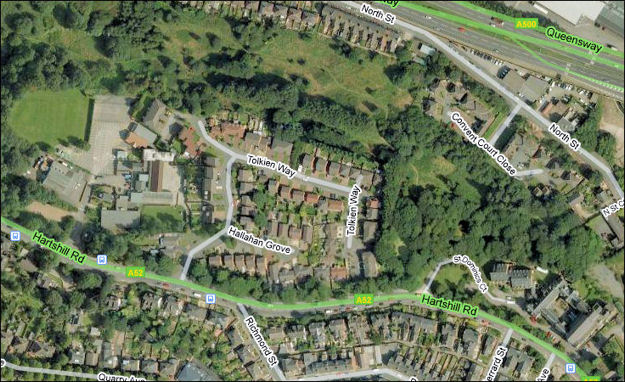|
Frederick Geen
- a "bitter anti-federationist"
Frederick Geen worked in the
financial audit department at the North Staffordshire Railway Company (who
were against federation). He later worked at a number of pottery companies
and then in 1884 set up his own accounting firm. The company still exists
today (2009) as Geens Accountants in Liverpool Road, Stoke.
Although Geen proposed and
supported the federation of the towns of Stoke, Fenton and Longton - he
did not want it to be extended to the other towns - he thought that such
an extension would be taken over by the much bigger town of Hanley,
because of this fear he became a "bitter anti-federationist".
|
1889 |
Geen stood for
election as the Stoke
borough
auditor, which he won. |
|
1890 |
Stood for election to
Stoke borough council, he lost. |
|
1891 |
Again stood for election
to Stoke borough council, this time he won and was appointed.
|
|
1897-9 |
Was mayor for Stoke for
the three years 1897, 98, 99. |
|
1903 |
Alderman Geen made a
report on the financial implications of federation of the six towns,
this report killed off such discussions.
Geen supported proposals for the federation of the three towns of
Stoke-upon-Trent, Fenton and Longton - this proposal came to nothing.
|
|
1907 |
A similar scheme to the
1903 one was made and Geen supported this, (this scheme eventually
helped in the progress of the federation of the six towns).
|
|
1907 |
A local inquiry
was held in Stoke, by Major C. E. Norton, the Local Government Board's
Inspector. The Board expressed the opinion
that federation should embrace a larger area and urged that six
areas should be included in the interests of economy and efficiency.
Financial adjustment between the towns was
the main stumbling block to federation.
In the end, the generally accepted scheme was
that known as Alderman Geen's scheme—a proposal that each town be a
separate
rating area for twenty years. |
|
1910 |
An anti-federationist to
the end - however when federation of the six towns came about he
sought to get a good deal for the town of Stoke. |
|
1910-11 |
Geen secured the
building of the King's
Hall (behind the Stoke town hall in Glebe Street, which was the
largest and most imposing municipal building in the six towns).
These buildings became the headquarters of the new county borough
council - much to the disappointment of Burslem who had started to
build a new town hall
(later to be the Queen's
Hall) in anticipation that they (as the 'Mother Town') would host
the the headquarters of the new council.
 see
the battle for the town hall
see
the battle for the town hall
|
|
1910 |
Major Cecil Wedgwood, a
director of the Wedgwood pottery company and a supporter of federation
became the first mayor of the new county borough.
Geen was appointed deputy mayor - it was said that his anti-federation
stance cost him the position of mayor. |
|
1913 |
In 1913 King George V
and Queen Mary formally opened the Kings Hall. Geen (who had now
become Mayor) entertained them to lunch at his home Cliff Ville (on
Hartshill Road). |
|
1913 |
During a serious coal
strike Geen set up a national fund (he had for 25 years been the
secretary to the North Staffordshire Miners' Relief Fund).
|
|
1915 |
Genn continued to
operate the fund and apparently some of the money was spent on
improving the churchyard in Stoke town.
On 28th January, at a meeting in the council chambers, Geen was about
to give an explanation, at the request of the Labour members, about
this use of the fund - when he collapsed in the chamber and died.
|
|

Cliff Ville - the
home and gardens of Frederick Geen
on Hartshill Road
from an 1898 OS map
The mansion known as Cliffe Ville (or
Cliff Ville) was built by John Tomlinson, a solicitor, in 1808. It
became Geen's home where, in 1913, he entertained King George V and
Queen Mary when they formally opened the Kings Hall in Stoke. In 1922
the house was acquired by the nuns at the nearby Dominican Convent and
became St. Dominic's High School.

St. Dominic's
School, Hartshill Road, Stoke
This two storey school building has a large drive and
surrounding gardens. Some windows and doors have been modified and
various later buildings have been attached. It stood on Hartshill Road
which was previously named Stoke Road.
photo: © The Potteries Museum & Art
Gallery
Staffordshire Past Tracks
Later a new school was built neared the
convent and in 1988 the house was demolished. Now a small housing
estate sits on the site of the house. Much of the grounds and some of
the ponds are still in existence as Hartshill Park.
"The area designated as Hartshill Park has a
varied history of land use. During the Domesday period it formed part
of a vast deer park, Cliff Hay, mentioned in 1204. Hart is the name of
a male deer and these were bred for the King to hunt in mediaeval
times. Hartshill as a place name is recorded in the 16th century.
The park was also
known as Castle Cliff because it was part of the royal manor of
Newcastle and its oak trees were used to repair the castle there. It
still existed in the 15th century because the hedges and posts which
enclosed it were repaired then. The area the present park occupies
is formed from the remains of two estates - Cliff Vale and Hartshill
Farm."
"The mansion known
as Cliff Ville was built by John Tomlinson, a solicitor, in 1808.
John Tomlinson died in 1838. In April 1864, F.W. Tomlinson is
registered as owning 13 acres of freehold. Cliffeville then passed
to the Stamer family. In 1892 the sale of Cliffeville was authorised
under the act of 1889. See p.186 'A History of the County of
Stafford vol. VIII J.G. Jenkins' for sources."
"A grotto where a
statue of Our Lady was placed during religious festivals and
processions still stands in a commanding position at the top of the
pools.
Many features of the garden area are waiting to be rediscovered,
including a stone capped wall with a gateway leading to a hidden
garden. There is also the use of local materials to build hard
landscaped features, and a possible seating or viewpoint which has
lost its view."
www.hartshillpark.org.uk

The same area in 2008
- from Google Maps
|
 |
![]()
![]()
![]()
![]()
![]()
![]()